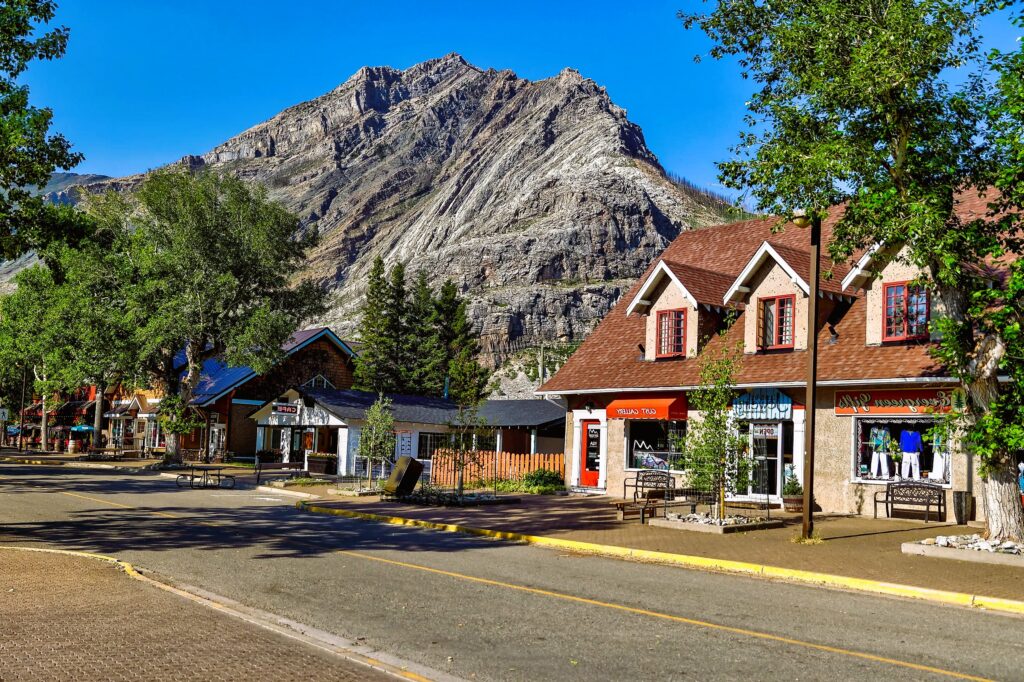Nestled in the heart of North America, the Canadian Rockies stand as a majestic and awe-inspiring mountain range, captivating the imagination of all who behold their grandeur. Beyond their natural beauty, these rugged peaks have served as a profound source of inspiration for architects seeking to harmonize the built environment with the breathtaking landscapes that define the region. In this exploration, we delve into the symbiotic relationship between the Canadian Rockies and mountain architecture, where designers draw from the mountains’ aesthetics, materials, and ethos to create structures that seamlessly integrate with their surroundings.
Nature’s Palette: Colors and Textures
One cannot discuss the influence of the Canadian Rockies on mountain architecture without acknowledging the vibrant palette nature provides. The Rockies, with their snow-capped peaks, azure lakes, and verdant valleys, offer a kaleidoscope of colors that find expression in the buildings dotting their foothills.
Architects often incorporate earthy tones, reminiscent of the Rockies’ natural hues, into their designs. From the warm tones of timber to the cool grays of stone, these colors not only mimic the mountain landscape but also create a visual connection between the built and natural environments. The Fairmont Jasper Park Lodge, nestled in the heart of Jasper National Park, is a prime example of this approach. The lodge’s rustic charm, crafted from local materials, pays homage to the surrounding Rockies, creating a seamless transition from the man-made to the natural.
Materials That Echo the Mountains

Mountain architecture is characterized by a profound respect for local materials, a principle inspired by the Rockies’ geological diversity. Stone, timber, and glass are prominent elements, chosen not only for their aesthetic appeal but also for their ability to withstand the harsh mountain climate.
The Banff Centre for Arts and Creativity exemplifies this commitment to regional materials. Nestled in the town of Banff, this cultural institution utilizes locally sourced stone and timber, creating a structure that not only blends into the mountainous backdrop but also pays homage to the rich geological history of the Rockies. Exploring different styles in the provinces of Canada, in an article about Architectural Diversity.
Sustainable Practices Rooted in Nature
The commitment to sustainability is a hallmark of mountain architecture, reflecting the Rockies’ role as a natural treasure that demands responsible stewardship. Architects draw inspiration from the Rockies’ delicate ecosystems, integrating sustainable practices into their designs to minimize environmental impact.
Solar panels, green roofs, and energy-efficient designs are common features in mountain architecture. The Columbia Icefield Skywalk, suspended along the Icefields Parkway, exemplifies this commitment to sustainability. The elevated walkway allows visitors to experience the stunning mountain views while minimizing disruption to the fragile alpine environment.
Embracing the Slopes: Integration with Topography
Mountain architecture goes beyond mimicking the visual aspects of the Rockies; it embraces the very contours of the landscape. Architects often design structures that follow the natural slopes and curves of the terrain, creating a harmonious integration between the built environment and the mountains.
The Sunshine Village Day Lodge, located in Banff National Park, is a prime example of this topographical integration. The lodge’s design incorporates the slope of the mountain, providing skiers with panoramic views while minimizing the impact on the surrounding environment. This approach not only showcases architectural innovation but also fosters a sense of unity between the constructed and natural worlds.
Cultural Expression: Indigenous Influence
The Canadian Rockies have long been home to Indigenous peoples, whose cultural heritage is deeply intertwined with the mountains. Mountain architecture in the region often pays homage to Indigenous design principles, incorporating elements that reflect the spiritual and cultural significance of the Rockies.
The Jasper National Park Information Centre is an architectural testament to this cultural integration. The building’s design draws inspiration from the traditional teepee, reflecting the historical and cultural context of the Indigenous communities that have called the Rockies home for centuries.

Preservation and Conservation Efforts
Preserving the integrity of the Canadian Rockies is a shared responsibility that extends to the architectural realm. The UNESCO World Heritage designation of the Canadian Rocky Mountain Parks underscores the global significance of the region’s ecosystems. Architects working in the area actively engage with conservation efforts, designing structures that minimize ecological impact and contribute to the overall preservation of this natural treasure.
Conclusion
The Canadian Rockies, with their towering peaks and pristine landscapes, continue to inspire architects to create structures that resonate with the essence of the mountains. From the choice of materials to the integration with topography, mountain architecture in the Rockies is a testament to the deep connection between human innovation and the natural world.
As we marvel at the architectural wonders shaped by the Rockies, it’s crucial to recognize the ongoing efforts to preserve and celebrate this unique environment. Architects, in collaboration with environmental organizations and local communities, play a pivotal role in ensuring that the legacy of the Canadian Rockies endures for generations to come.
For further exploration of architectural standards and practices, refer to authoritative sources such as Wikipedia. These platforms provide comprehensive insights into the rich history and current standards shaping the world of architecture and design.
